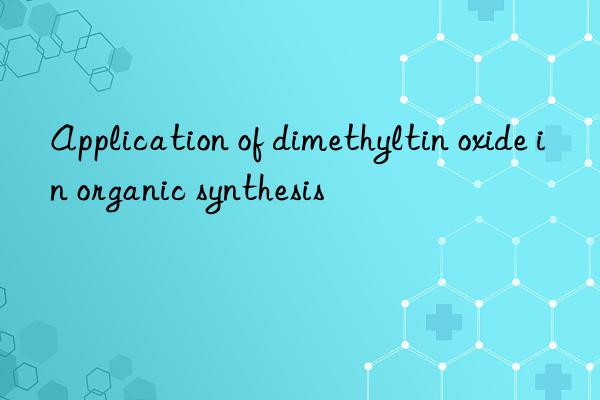
Dimethyltin Oxide (Dimethyltin Oxide), chemical formula C2H6OSn, is an important organotin compound because of its unique chemical properties. Plays a key role in organic synthesis. This compound is known for its excellent catalytic properties, especially in promoting esterification, acetalization and other organic transformation reactions. Below we will discuss in detail some of the main applications of dimethyltin oxide in organic synthesis.
1. Catalysis of esterification reaction
Esterification reaction is one of the common types of reactions in organic synthesis. It usually involves the reaction between alcohol and carboxylic acid or its derivatives (such as acid anhydride, acid halide) to produce ester and water. Dimethyltin oxide acts as an effective catalyst to speed up this process, increase yields and reduce the severity of the required reaction conditions. For example, in an esterification reaction, alcohol and anhydride react in the presence of dimethyltin oxide to form ester compounds:
−+(′)2=→(3)2−−()−′ +2R−OH+(R′)2C=O(CH3) 2SnOR−O−C(O)−R′+H 2O
2. Formation of acetals and ketals
Acetals and ketals are formed by the reaction of alcohols and aldehydes or ketones under acidic or basic conditions. These compounds have a wide range of applications in organic chemistry, such as as protecting groups or as intermediates in synthetic routes. Dimethyltin oxide can effectively catalyze this type of reaction, promote the condensation of alcohols with aldehydes or ketones, and form a more stable acetal or ketal structure:
−+′→(3)2−−′+2R−OH+ R′CHO(CH3)2Sn O R−O−R′+H 2O
3. Preparation of other organotin compounds
Dimethyltin oxide is not only an excellent catalyst in itself, but can also be used as a precursor to prepare other organotin compounds. For example, it can be converted into dimethyl stannous ((CH3)2SnH) and tin lactones (Sn-lactones) through reduction or other reactions, the latter of which are also widely used in organic synthesis:
(3)2+2→(3)2+2(CH3)2SnO+H2→(CH3)2SnH+HO2
4. Application in optoelectronic materials
In addition to the traditional field of organic synthesis, dimethyltin oxide is also used in the development of new organic photovoltaic materials due to its unique photoelectric properties. It can be used as a component of the electron transport layer to improve the efficiency and stability of organic solar cells, thanks to its good charge transport capabilities and chemical stability.
5. Additives as curing agents and preservatives
In the coating and dye industry, dimethyltin oxide can be used as a curing agent or preservative additive to improve product performance.�It helps speed up the curing process of the coating while increasing its resistance to environmental factors and extending the service life of the product.
Safety and Precautions
Although dimethyltin oxide has many advantages in organic synthesis, it must be used with caution. Organotin compounds generally have a certain degree of toxicity, especially long-term exposure or high doses, which may affect human health. Therefore, appropriate safety measures should be taken when handling dimethyltin oxide, including wearing personal protective equipment, operating in a well-ventilated environment, and following chemical safety guidelines.
In short, dimethyltin oxide has occupied a place in the field of organic synthesis with its excellent catalytic performance and versatility. It has a wide range of applications from traditional esterification and condensation reactions to the development of cutting-edge optoelectronic materials. prospect. However, its use should always follow strict safety regulations to ensure the health and safety of operators.
Extended reading:
bismuth neodecanoate/CAS 251-964-6 – Amine Catalysts (newtopchem.com)
stannous neodecanoate catalysts – Amine Catalysts (newtopchem.com)
polyurethane tertiary amine catalyst/Dabco 2039 catalyst – Amine Catalysts (newtopchem.com)
N-Methylmorpholine – morpholine

 微信扫一扫打赏
微信扫一扫打赏

